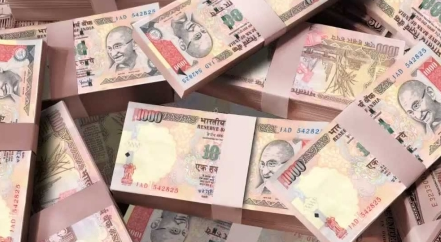Money
Anything that can be generally acceptable as payment for goods and services or settlement of debts is Money. It is the element of confidence that others will accept it as a payment is what gives the purchasing power to money. The major functions of money are:
- It a medium of exchange
- Its a unit of account
- Its a store of a value
Evolution of Money
Prior to evolution of money as a medium of exchange, the goods and services were directly exchanged in the barter system. Even before barter system, there was just a gift or debt economy. In prehistoric times, barter used to take place only between enemies and strangers. Money gradually evolved into “commodity money” when a commodity had the purchasing power. It gradually developed into representative money or “Fiat Money“.
The shell of Cowry was commodity money. Later silver and gold pieces and coins started getting used commodity money. When the Gold and silver merchants started issuing receipts to their depositors, these receipts became the prototype of representative money. During the Song Dynasty rule in China in 7th century, the paper money came into existence which was known as jiaozi. The Jiaozi had developed from promissory notes. By that time, coins as money had already well developed around the world. The paper money used to run in circulation along with the coins. In 1661, the first bank note was issued in Europe. For a long time, the paper money was backed by equivalent value of Gold, thus we know about the Gold Standard. Then a time came when other currencies were pegged to the strongest currency of the world i.e. US dollar which itself was convertible to Gold.
Fiat Money
The last and current kind of money is the Fiat money which is backed by nothing but a guarantee of the government of a country as a legal tender and ability of the government to convert the money into goods via payment.
Thus, the Fiat money has the following properties:
- It is backed by the Government guarantee
- It has no or negligible intrinsic value. The coins which we use today as of their metal value have negligible in comparison to the guarantee held by them thus coins also fiat money.
- It is neither convertible by law to any other thing, nor fixed in value in terms of any objective standard.
Near Money
Near money is a concept closely related to liquidity. Liquidity refers to how fast the money can perform the economic actions like buying, selling, or paying debt, meeting immediate wants and needs. Click here to know more about Near Money.
Functions of Money
Money is a matter of functions four, a medium, a measure, a standard, a store.
Thus the functions of money are:
- Medium of exchange: Money as a medium of exchange avoids the inefficiencies of a barter system.
- Unit of account: Money as a unit of account is a standard numerical unit of measurement of the market value of goods, services, and other transactions.
- Standard of deferred payment: Money is accepted way to settle a debt – a unit in which debts are denominated. Academically, this function is a thing of past and money is now not considering a standard of deferred payment. The reason is that the value of money (now currency) may fluctuate over time via inflation and deflation, the value of deferred payments (the real level of debt) likewise fluctuates.
- A store of value: Money acts as a standard measure and common denomination of trade. It is thus a basis for quoting and bargaining of prices.
Money Supply
Total stock of money is the broader term which includes all the money held by public as well as the suppliers of money such as Government and RBI. Click here for more information about Money Supply.
Value of Money
By value of money were mean the purchasing power of money. Purchasing Power is the amount of goods or services that can be purchased with a unit of currency. For example, our grandfathers used to buy more goods in same amount of rupees than we can do today. The Rupee’s purchasing power in the times of our grandfathers was more.
There exists an inverse relation between the value of money and the price level. When the value of money rises i.e. its purchasing power increases, the general price level falls and vice versa. This means the value of money is inverse of the general price level. Similarly, when the general price level increases, the value of the money decreases and vice versa.


